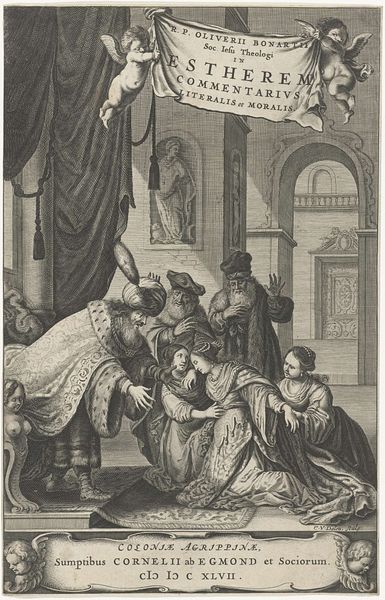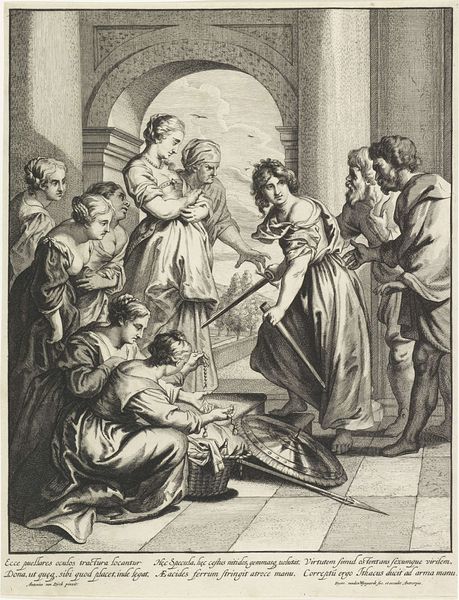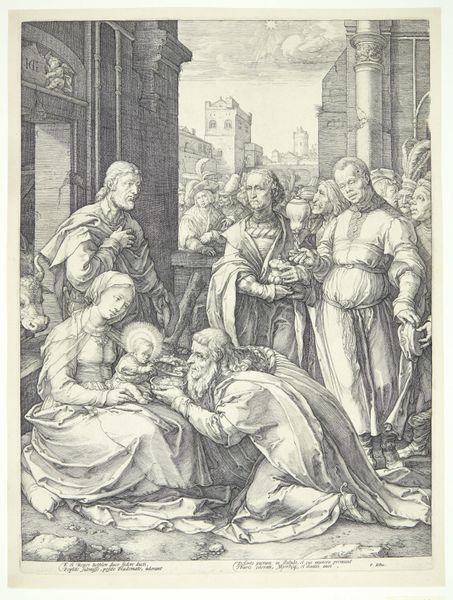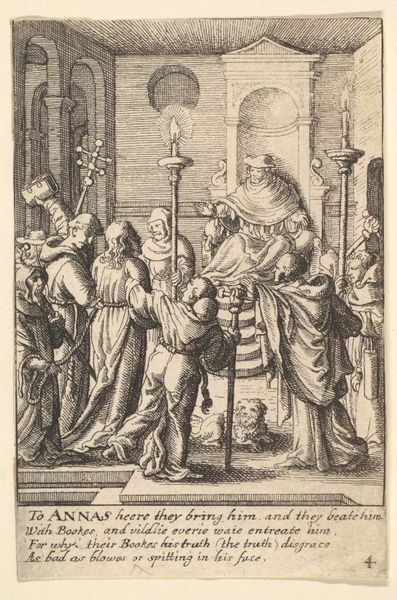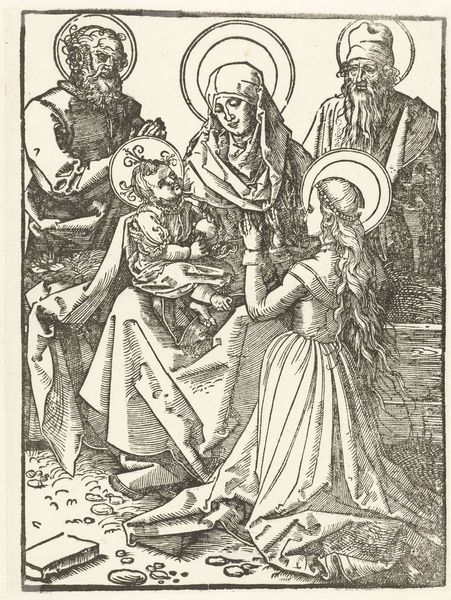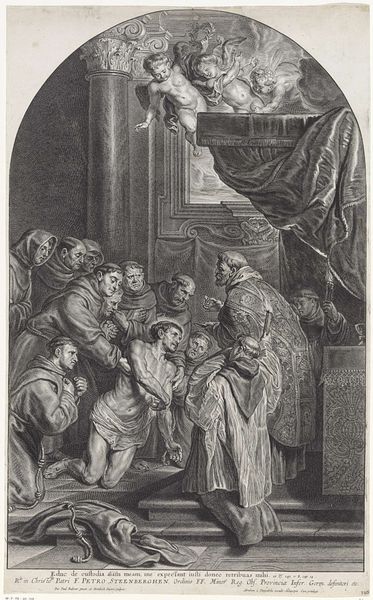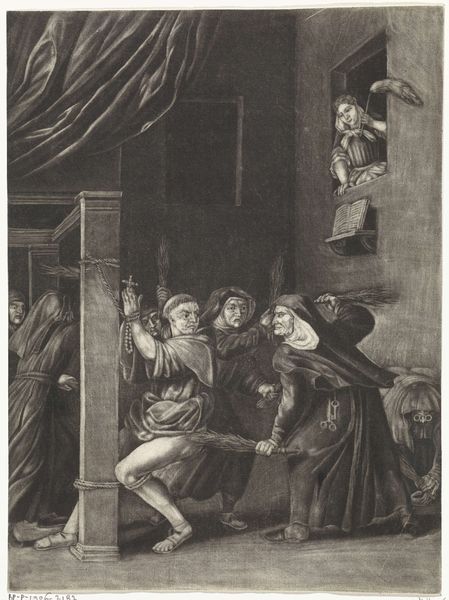
print, engraving
#
medieval
# print
#
old engraving style
#
caricature
#
figuration
#
genre-painting
#
history-painting
#
engraving
Dimensions: height 194 mm, width 142 mm
Copyright: Rijks Museum: Open Domain
Curator: This is Johann Sadeler I’s "Visitatie," an engraving dating from around 1587 to 1589, here at the Rijksmuseum. Editor: It's quite striking. There's a theatricality to the figures, almost like a stage production. The texture achieved through engraving is fascinating – all those precise lines. It creates a unique interplay of light and shadow. Curator: Absolutely. The engraving process itself—the act of physically carving those lines into a metal plate and then transferring the image—dictates the visual language. Notice how the artist utilizes the medium's capacity for detail to construct texture in their garments and background. It speaks to a skilled artisan leveraging available technology of the time. Editor: Considering the period, I am particularly drawn to how the imagery would circulate. Prints like these were the mass media of their time, influencing and standardizing visual culture across different social strata. How would viewers in the 16th century have encountered this image and what cultural weight did that carry? Curator: That's a salient point. These images, initially produced within a printmaking workshop, eventually shaped understandings of Biblical narratives and influenced religious and social attitudes. And the Latin inscription – “Egressa es in salutem populi in salutem cum Christo tuo” (You have come for the salvation of the people with your Christ) - underscores this public dimension. It indicates this work functioned not merely as aesthetic embellishment but served some devotional or communicative purpose. Editor: It highlights the political agency latent within artistic creation and dissemination, too. How prints like this could cement power structures or offer potential sites of subversion is always interesting to me. Curator: Precisely, we shouldn’t neglect the influence the artist exerted here as image-maker, in directing its reception and cultural contribution. This work shows more than just a holy meeting. It reveals what image-making looked like then, which in turn speaks to what that meant for its contemporary viewers. Editor: Right. It shifts our perception from a passive viewing experience toward thinking actively about artistic labour, social circulation, and cultural influence.
Comments
No comments
Be the first to comment and join the conversation on the ultimate creative platform.

